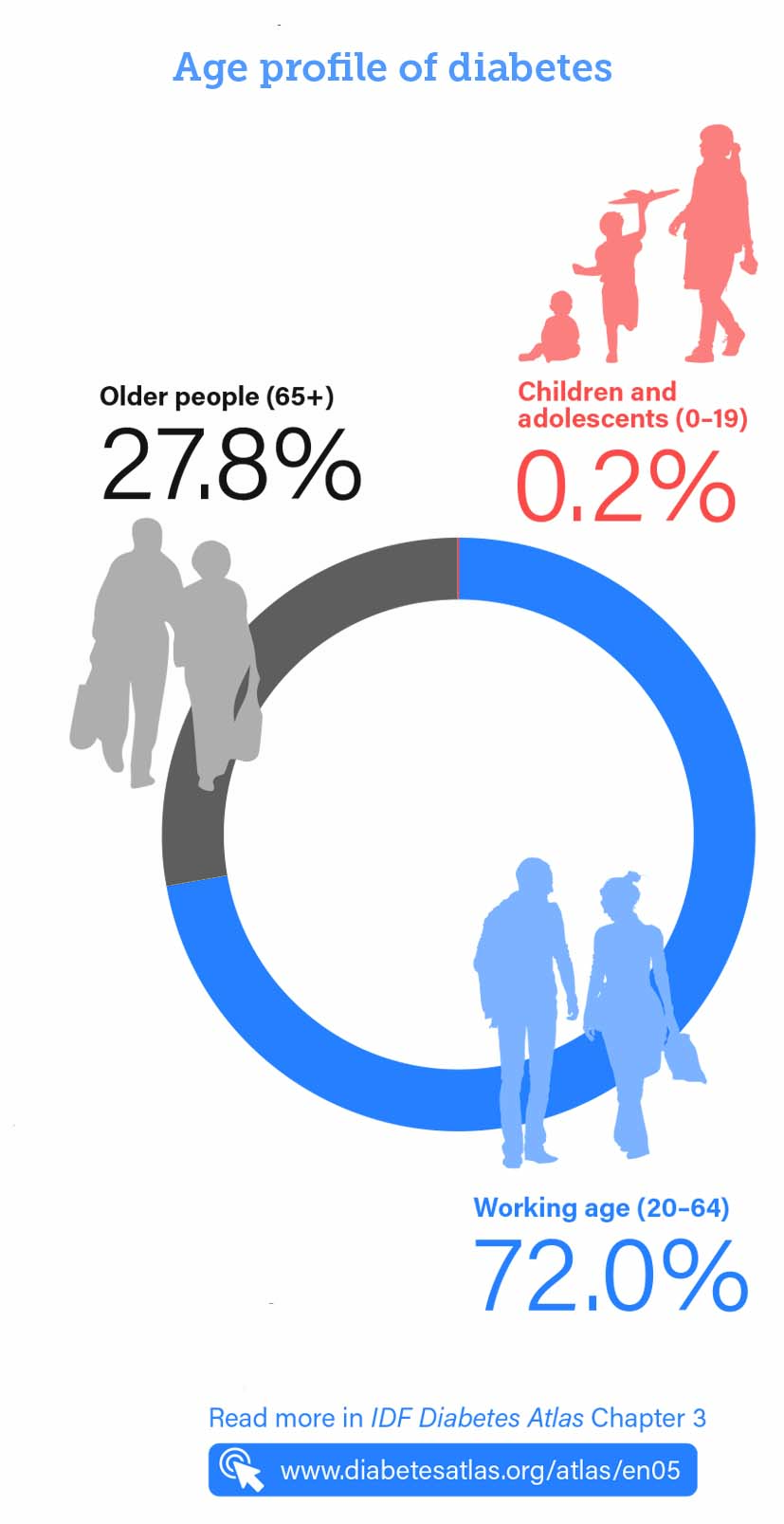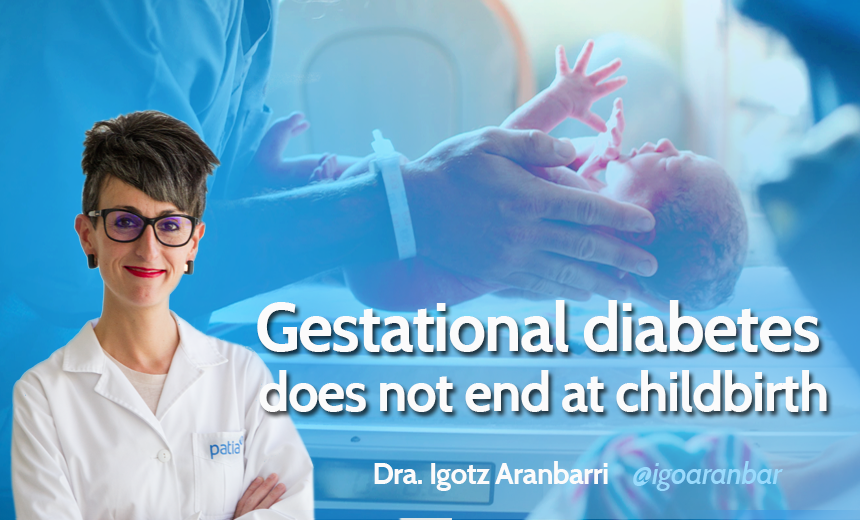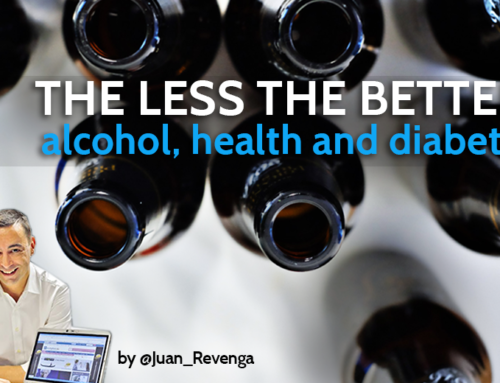Gestational diabetes does not end at childbirth
 A few days ago, Belén, a 45-year-old woman, came to the office. Immersed in the care of her two daughters of 7 and 5 years, she told me: “I am very tired. Maybe it’s because of the life I lead, with so much stress and little rest”.
A few days ago, Belén, a 45-year-old woman, came to the office. Immersed in the care of her two daughters of 7 and 5 years, she told me: “I am very tired. Maybe it’s because of the life I lead, with so much stress and little rest”.
After a thorough physical examination and a detailed anamnesis, we proposed to perform a blood test, since more than five years had passed since the last one.
We both remembered that she had had diabetes in her second pregnancy, although “that was cured”.

We met to review the results of the analysis and to see how she was doing. The blood test was conclusive: a glucose of 139 mg/dl and a glycosylated hemoglobin (HbA1c) of 6.8%. (Diabetes Journals. ADA). There was no doubt, Belén had type 2 diabetes and telling her was going to be difficult. She looked at me with a face of disbelief: “Nothing hurts me, Igotz. It can’t be.
And indeed, this is usually the case. Type 2 diabetes mellitus usually arrives without warning, and it does not hurt. It is a silent disease, and when it arrives it does so to stay. It is a chronic disease and unfortunately, the cause of multiple complications.
If I don’t have a family history of diabetes, where does this come from? How come I have type 2 diabetes?
Gestational diabetes is diagnosed during pregnancy. Since it is a fairly common health problem, with an estimated prevalence of about 10% at this stage of a woman’s life, and can cause complications for both mother and baby. In women it can cause preeclampsia with high risk in these cases of needing an emergency C-section due to vital risk for both. Many babies of mothers with gestational diabetes are born with high birth weight (macrosomia).
For the mother, the data is revealing: 50% of women who have suffered from gestational diabetes develop type 2 diabetes mellitus in a short period of time. According to this publication: 1 in 2 women develop type 2 diabetes mellitus within 5 years after delivery.
In the case of the baby, it is prevalent the presence of obesity and development of diabetes type 2 in early ages, as well as arterial hypertension and metabolic syndrome.
The Type 2 Diabetes Pandemic
Type 2 diabetes mellitus is an epidemic of our century and our society. It is much more than “a little bit of sugar in the blood. It is a disease that spreads throughout the body, generating retinopathy, nephropathy, heart disease, neuropathy, etc. It devastates. Type 2 diabetes:
- Can cause of blindness in our society in people of working age and also of non-traumatic lower limb amputation.
- It is closely linked to the development of diabetic kidney disease and the need for renal replacement therapy (dialysis) in this context: 1 in 4 people who need this treatment have type 2 diabetes mellitus.
- It also causes heart failure and hospitalization for this reason.
- It causes multiple cardiovascular events such as stroke and acute myocardial infarction, both of which are potentially fatal.
- It generates multiple mental and emotional health problems, as many people with this disease suffer from depression and anxiety disorders.
- Diabetes and mortality are an indivisible binomial. It doesn’t hurt, no, but it kills slowly at best, when it doesn’t do it in a fulminating way. And no, it does not warn, unfortunately.
Two out of three people with diabetes die from cardiovascular disease-related conditions.
Don´t give up!
Knowing our genetic predisposition to develop diabetes is possible today and this allows us to determine the most individualized approach possible, since our genes are unique and they are the ones that contain the information of what can happen in our lives.
For gestational diabetes, we must remember that “IT DOES NOT HEAL”. The blood glucose figures may become corrected after birth, but the path to type 2 diabetes mellitus remains open.
Therefore, it is important to monitor glycemic control after delivery, specifically at 4-12 weeks postpartum, and to continue with tri-annual analytical controls.
Likewise, adopting a healthy lifestyle that includes a pattern of eating and physical exercise adapted to the patient’s life situation and that makes it possible to avoid overweight and obesity is essential. In addition, it is essential to approach the patient emotionally and other extremely important parameters such as sleep patterns, stress control, monitoring of drug treatment, etc.

“Will you help me on this path, Igotz? I will need support, help and knowledge in the matter,” -she told me. “Of course, Belén. We´ll get through this together”
Time to make a plan. We’ll go step by step, starting by request a retinography to assess the fundus and see that there is no ophthalmological damage. We will also request an electrocardiogram to see that there are no alterations at this level. We will make an appointment with my partner in Nursing to explore the feet and rule out any neuropathy that could be the cause of loss of sensation and the appearance of injuries that could be complicated. We will have to take note of weight and height and calculate the Body Mass Index (BMI) and waist circumference.
We will also review in detail your lifestyle to know how your eating and exercise patterns are to see what things are improvable and affordable to modify, as well as other interesting data of your life such as sleep pattern, stress level, etc. In this way we can make a holistic approach, because we care about all of you, and because all of this has an influence on the control of your diabetes. We will also propose the pharmacological treatment that could be better adapted to your characteristics.
“Always write down all your doubts, and tell me about them. Having doubts only feeds uncertainty.”
We must focus on each person, and there is no excuse: every diabetes is different because each person is different. And this, and no other, should be our motto in the battle against diabetes. Teamwork and focus on each person will allow us to go further and achieve our goal: to keep diabetes under our own control to improve the quality of life.
There is no doubt: a woman with a history of gestational diabetes has a 10 times higher risk of developing type 2 diabetes compared to a woman who has not suffered this disease in pregnancy.
Patia DIabetes
Latest posts by Patia DIabetes (see all)
- From gestational diabetes to type 2 - 10 November, 2020
- COVID-19 & Diabetes: the dangerous interaction of two pandemics - 24 June, 2020
- New Covid-19 features in DIABETESprevent app - 7 April, 2020








